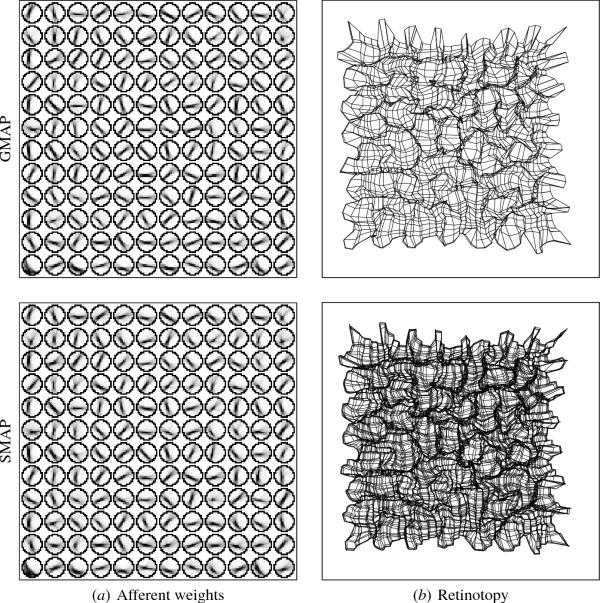
Click on the image to see a PDF version (for zooming in)
Fig. 11.3. Self-organized afferent weights and retinotopic
organization. In (a), the afferent weight matrices of
corresponding sample neurons in SMAP and GMAP are plotted (in gray
scale as in Figure 6.4, organized as in Figure 5.8a): In SMAP, every
fourth neuron horizontally and vertically is shown, and in GMAP, every
tenth neuron. Both maps saw the same inputs during training, and due
to the intracolumnar connections they developed matching orientation
preferences. Since the ON/OFF channels in the LGN were bypassed in
this simulation, the receptive fields are all unimodal. However, they
display the same properties as the orientation model in Section 5.3:
Most neurons are highly selective for orientation, and neurons near
discontinuities are unselective. In (b), the center of gravity of the
afferent weights of each neuron in the network are plotted as a grid
in retinal space (as in Figure 5.11). Although the two maps differ in
size, the overall organization closely matches: Neurons in the same
cortical column receive input from the same locations in the retinal
space. The overall organization of the map is an evenly spaced grid
with local distortions, as observed in biology and in the LISSOM
orientation map (Figure 5.11; Das and Gilbert 1997). The preferences
are sharper and the distortions wider than in the LISSOM simulations
because more elongated input patterns were used during training.
|